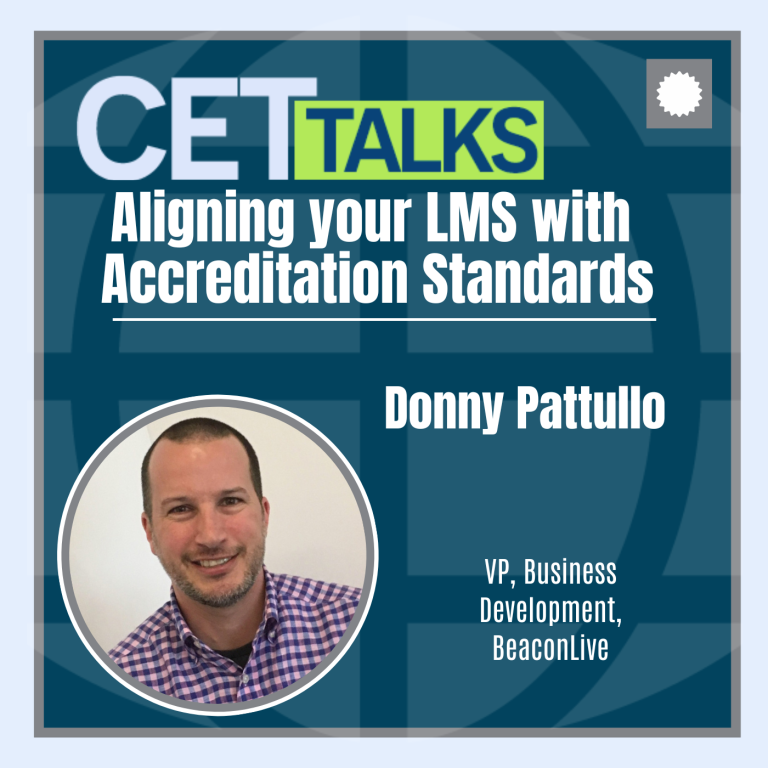Episode 23
- Episodes
- Episode 23: Igniting Imagination
.
CET Talks: Accreditation, Learning and Leadership
Episode 23
September 9 2024 . 19 MINUTES
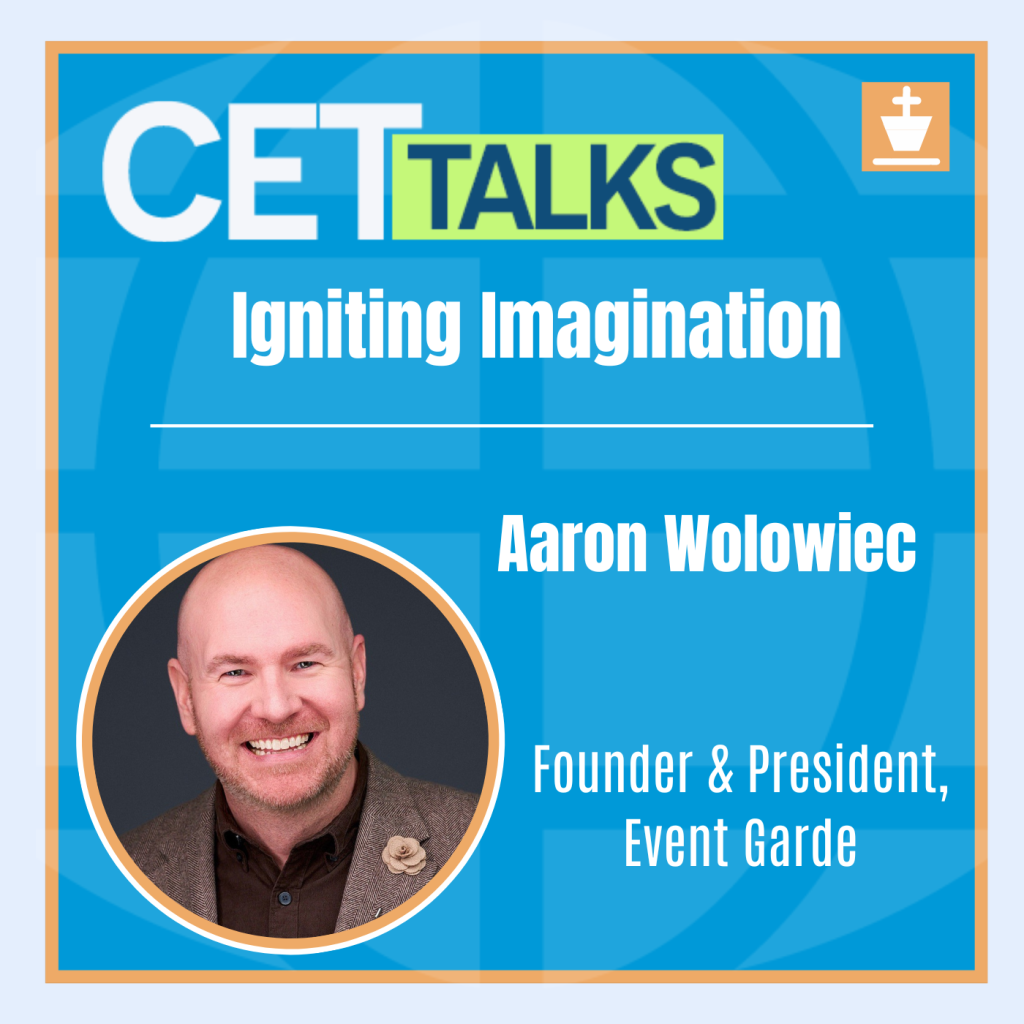
Igniting Imagination: Crafting Creativity in Training Environments
Trainers and facilitators know how a powerful narrative can shape a learning experience, but more often than not, our story’s fall flat, bogged down by realism and gray-scaled practicality. But learning doesn’t have to be stagnant, and the opportunity exists to create spaces that not only engage all five senses but also inspire creativity, discovery, and transformation for the learners we serve. Join Aaron Wolowiec, Founder and President of Event Garde, as he explores the potential and power of curiosity in training events, unlocking actionable strategies for trainers, facilitators, and learners alike.
Listen to the Podcast
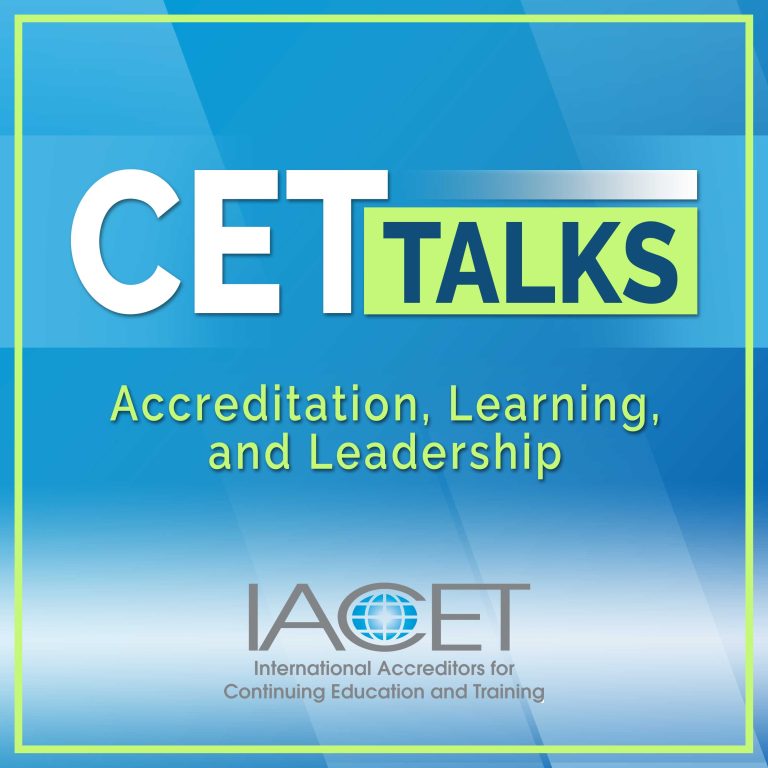
Welcome to CET Talks, the International Accreditors for Continuing Education and Training’s podcast, where we convene thought leaders in the continuing education and training ecosystem to share ideas, research, best practices, and experiences that promote the creation of a world that learns better. Your hosts are Randy Bowman, Interim President and CEO of IACET, and certified corporate wellness specialist Mike Veny.
Trainers and facilitators know how a powerful narrative can shape a learning experience, but more often than not, our story’s fall flat, bogged down by realism and gray-scaled practicality. But learning doesn’t have to be stagnant, and the opportunity exists to create spaces that not only engage all five senses but also inspire creativity, discovery, and transformation for the learners we serve. Join Aaron Wolowiec, Founder and President of Event Garde, as he explores the potential and power of curiosity in training events, unlocking actionable strategies for trainers, facilitators, and learners alike.
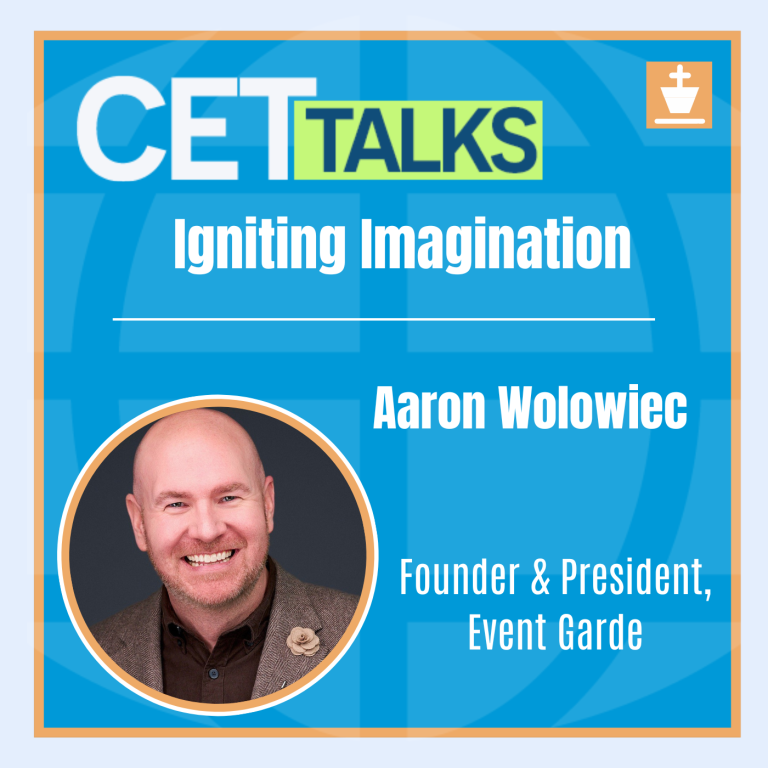
Transcription
Host: Welcome to CET Talks, the International Accreditors for Continuing Education and Training’s podcast, where we convene thought leaders in the continuing education and training ecosystem to share ideas, research best practices, and experiences that promote the creation of a world that learns better. Enjoy the episode.
Randy Bowman: Hello and welcome to CET Talks. My name is Randy Bowman, IACET’s president and CEO, and I’m here with my co-host, Mike Veny, a certified corporate wellness specialist and CEO of an IACET-accredited provider. Hey, Mike, great to see you again.
Mike Veny: Hi, Randy. Before we get started with today’s guest, I have a question for you. I should have probably asked you this before we hit record, but I’m conflicted on something. Okay. We have a system for doing these podcasts, but I think we might want to change things up and like, I don’t know, maybe I do the intro, or the two of us have an argument in the intro or something. I don’t know. What are your thoughts on all that?
Randy Bowman: Change? Scares me. I like nice structured black lines, but I can be flexible if I need to be.
Mike Veny: Well, I’m just trying to be creative. I’m trying to be creative and that’s what’s on my mind.
Randy Bowman: And you know, Mike, that’s why we work well together. I bring the nice structure and organization, and you bring the fun and spirit and the ability to knock me out of that routine so that things can be engaging. Luckily we have a person with us today who’s going to talk to us about how to create creativity.
Mike Veny: Yes, we do. Aaron Wolowiec is the founder and president of Event Guard, a serial learner and entrepreneur. Aaron has combed his craft and now designs engaging multi-sensory experiences for a diverse range of learners. I want to understand more about that. Aaron is nationally recognized for his learning meetings and facilitation work with boards, volunteers, members and staff. Aaron, welcome to the show.
Aaron Wolowiec: Thank you so much for having me.
Randy Bowman: Hey, we’re glad you’re here. Okay, I just said it, I tend to be a business guy, head down, no nonsense. Creativity to me can be fluffy, right? It’s just getting in the way. So tell me why I am wrong and how does it impact engagement?
Aaron Wolowiec: Well, as I was thinking about this for today’s recording, I thought maybe I would start with what creativity is not and why it’s a problem when we’re not creative. When I think about creativity, I’m not necessarily talking about arts and crafts and paint and finger painting and all of those things that feel at the opposite end of this extreme or spectrum, Randy, to what you were speaking about earlier. When I think about what creativity is definitely not—I find this to be the case with my clients, and in the facilitations that I sometimes find myself in, where we walk into the same conference room where every meeting is always held, the table and the chairs are arranged in the same way that they always are. Every single person who attends that weekly or monthly meeting sits in the exact same seat. We wouldn’t want to upset the apple cart after all. We go through sort of the same motions. What happens when we bind ourselves in that routine is that although it is comfortable, our brain takes shortcuts and the shortcuts that our brain takes is saying, “I know what this is. I know what participation looks like. I know what’s expected of me. I can check out. Maybe I will be listening for my name. If I’m caught off guard, I will check in at that moment and maybe respond, but otherwise this is familiar, this feels safe, this feels like business as usual.” Unfortunately when we do what we’ve always done, we’re going to get what we’ve always got. So when we think about creativity, we want to think about the act of generating new and original ideas, thinking outside of our conventional thinking and boundaries, combining different ideas from different stakeholders or different perspectives and producing something that is not just innovative but is really useful in moving us forward. Creativity is one of the means in which we can identify in our training and facilitation work really different, unique, innovative ideas to challenges that have been plaguing us for a very long time.
Mike Veny: I just wrote so much down there on my notepad, and I have so many questions, but I’m going to get right to an important one. In your journey, what common challenges have you encountered when trying to design and implement creative environments for learning and facilitation? I’m sure people are very resistant to this sometimes, right?
Aaron Wolowiec: Yeah, I think that’s funny. I wrote down a couple of things in preparation for this question and the very first one on my list is that resistance to change, the fear of the unknown, having the way we like to do things, the way we’ve done and seen them before. Sometimes because of that, we don’t see the value in trying or doing something new. In other instances, it’s just a lack of resources. We don’t invest the money into what it means to be creative. I’m not suggesting that creativity is super expensive, but I do think that it does take an investment. For a course that I regularly train over two days, we put little fidget toys on the table and over period of months and years of teaching the course, sometimes those fidget toys either break down or they walk away. There is some small investment in replacing those and keeping them current and up-to-date. But also thinking about the investment in time, thinking about sitting down to say, “If I were going to do this differently or if I were to do this more creatively, what would that look like?” Sometimes that fear of failure, that fear of risk, the fear of not knowing a different way or not leaning into a different strategy and not having buy-in and support from your other team members or from leadership. These are all things that can stand in the way of us being creative.
Mike Veny: No, I understand that. One thing I wanted to ask, just in defense of my co-host and friend, Randy here, and what IACET teaches, systems and processes are important for business. Randy is looking at me like he was just thinking that, right?
Randy Bowman: Yes, I was actually forming my question right around this.
Mike Veny: Oh my gosh. So the question that I have for you is we need systems and processes for predictability to run a business, but we also need creativity. I get it. I’m an artist by trade, so I’m totally with you. So where’s the line here? Where’s this line?
Aaron Wolowiec: Yeah, I think that’s where we have to lean into the specific conversation or training or facilitation that we’re having and to identify along that continuum of, maybe not diametrically opposed, but on one end system and structure and on the other end creativity and innovation; a sliding scale of usefulness of what are the objectives or outcomes that we’re trying to achieve in whatever conversation we’re trying to lead or have and determine where the process and structure and systems are needed. But also, where are the places that in order to garner different perspectives and insights from our learners or different approaches or considerations, if we’re in a facilitation, what is going to get the most out of that particular experience? And using a combination of the two to produce that outcome or achieve the outcome that you’re looking for. I don’t know if there’s a prescribed percentage or balance, but I think it is about, as always, starting with the end in mind, thinking about those outcomes, and then designing an intentional strategy and plan to help get you there. If there is an opportunity to balance like co-facilitators or co-train where you do have a mix and balance of those skill sets and comfort level in those leading the session, what an even more brilliant outcome to be achieved for your learners and participants, where they’re getting a good mix of those skill sets and knowledge.
Randy Bowman: So to follow along with how we measure creativity, how do we monitor if we’re incorporating in the right amount there, how do we do that? What do you look for?
Aaron Wolowiec: You know, at my core as a trainer, as a facilitator, one of the most fundamental things that I’m looking for in groups that I lead, engage, and facilitate is participation. I think what I’m about to say is going to feel or sound extreme and I’ll certainly back it up, but I think that when we’re training, when we’re facilitating, at least in my work, I’m never looking for 25 or 50 or 75% or even 90% participation engagement. I’m really looking for 100% engagement. As long as we think about what we mean by engagement, I think it is achievable. When I think about engagement, I think about the different ways that people can engage. I don’t necessarily always mean raising our hand and speaking out loud, but thinking about if we’re really designing, engaging, learning and facilitation experiences, opportunity for self-thinking and reflection time, opportunity to work in pairs or small groups, opportunity to work in large groups, and developing a design plan that really helps us to achieve some sort of engagement for everyone, although it may not look the same. I think your ability to stand outside of that engagement to say, “I think everyone did engage in some sort of way”, is one really big measuring stick I would like us to think about and consider. I think that post session there are a lot of other examples of typical questions we can include on surveys. I wrote down a couple of them: ”How would you rate the novelty of the ideas you generated during this experience?” “Describe a moment during the learning experience when you felt most creative.” “What factors contributed to that?” or “To what extent did the learning environment support risk taking and experimentation?” “How did collaboration with peers affect your creative process and outcomes?” And lastly, ‘What changes, if any, would you suggest to enhance the creative aspects of this learning experience?” They’re all going to be qualitative responses. I think it’s often difficult on a quantitative scale to judge creativity because everyone’s relationship to creativity will differ. As an artist I would suspect, Mike, you would look for a high level of creativity or maybe you would be less impressed by some things that maybe would push Randy a little bit outside of his comfort zone. I think these qualitative responses are really helpful to identify if the engagement really supported creative thinking and certainly outcomes.
Mike Veny: Those are fantastic questions. To those of you listening out there, if you didn’t listen to those questions or write them down, I encourage you to rewind this and go back and listen. Now, just to give you some context here, I facilitate interactive drumming workshops, so I do this all the time. I’m asking you, facilitator to facilitator, if there is that one person in the group that is just resistant to it or maybe you’re working with an organization where everyone else is on board with you but the CEO, how do you navigate that in real time? In the moment?
Aaron Wolowiec: I think two things stand out to me. One is teeing up the session at the outset, to share or to set the tone and context for your intentionality around creativity is important. Even sharing a week in advance or a couple of days in advance, our intention during the session is to push you outside of your comfort zone a little bit and to lean into creativity for X, Y, and Z reasons. I think giving people some time to sit with that and think about it and process it is always great. I hate springing that on someone at the onset of a session when they don’t necessarily know what they’re getting themselves into. I think a second thing that I was really thinking about is we typically start our trainings and facilitations with community agreements, some sort of norm setting where we identify the expectations for how people will engage with that particular session, what’s acceptable and unacceptable in terms of behavior, not only interacting with the facilitator, but also with one another. Setting this context for the environment and how people are going to engage is helpful. I think one more, as I was just speaking, that really made me think is that not everyone is going to accept and take on this creative mindset 100%. And that’s okay. People don’t have to all engage in the same way. They don’t all have to be super excited and onboard and sometimes people observing creativity at work will get their mind thinking and later down the road, the next session, the next opportunity, maybe they’ll be brave enough to try just a little bit more. Not forcing a square peg into a round hole and recognizing that, as adult learners, we also have the choice to not participate and not engage in the same way as everyone else. And that’s okay too.
Randy Bowman: Aaron, this has been an incredible discussion, and I can’t believe it’s going by so fast. So one of our things that we like to do is we like to ask every single one of our guests, what does a world that learns better look like to you?
Aaron Wolowiec: So many things, so many things. The first thing though that really comes to my mind is the eagerness and openness to learn. I think that when we stop craving learning, we ourselves atrophy, and I think that the organizations and the industries that we’re involved in also do the same. I think that resides within each of us as individuals, but also as trainers and facilitators. That responsibility lies within each of us. We need to be open to learning and refining and honing our craft to experimenting with creativity and innovation and new systems and methods and approaches. Just because you’re at a certain point in your career to say, I know it all, I’ve learned it all, and I’m just going to do it the way I’ve been doing it, I think is a real failure to the people that we have the opportunity to impart knowledge and information and wisdom upon. If we continue to dedicate ourselves to lifelong learning, then I think we will be even better educators for others.
Mike Veny: Aaron, thank you so much for sharing all of this with us today. I got so much out of today’s interview; it just flew by. Randy, I usually have one main thing that I got, but for this one I’ve got a few, actually. One, those questions for measuring are so important, and the idea of a community agreement in different situations. But for those of you out there that might be skeptical, this idea that just observing creativity might be all that you need to get the benefits from it. What about you, Randy?
Randy Bowman: I picked up two that really stuck with me, and one was from the very beginning that there are people like me who like things to always be in place and they like to know what to expect. And I can check out because I’m comfortable. That really resonated with me as maybe a reason why I’m somewhat resistant is I like being comfortable. At the end, it almost plays into that where Aaron talked about the importance of setting expectations because that really speaks to me as a person who wants to be comfortable. If you give me a warning, if I know what to expect, I’m definitely going to come in being more open to a different experience, a creative experience, an innovative experience.
Mike Veny: Wow. I absolutely agree with you. I wrote down those same things as well. As we wrap up today’s discussion on creativity, we’d love to hear from you. What changes can you make to your learning experiences and environments that might inspire your learners, participants, trainers, and facilitators to be more creative in their learning journey? Please share your experiences and insights on our LinkedIn page. Your stories can provide invaluable lessons and inspiration for others navigating similar paths. And don’t forget, you can submit topic ideas, suggestions for guests, and other feedback on the CET Talks podcast page of the IACET.org website. We certainly hope you’ll subscribe to this podcast on your favorite podcast platform, so you don’t miss any episodes. Thank you so much for joining us today.
Host: You’ve been listening to CET Talks, the official podcast of IACET. Don’t forget to subscribe to the podcast on Spotify, Apple podcast, or wherever you listen to podcast. To learn more about IACET visit IACET.org, that’s I-A-C-E-T.org. Thanks for listening, and we’ll be back soon with the new episode.
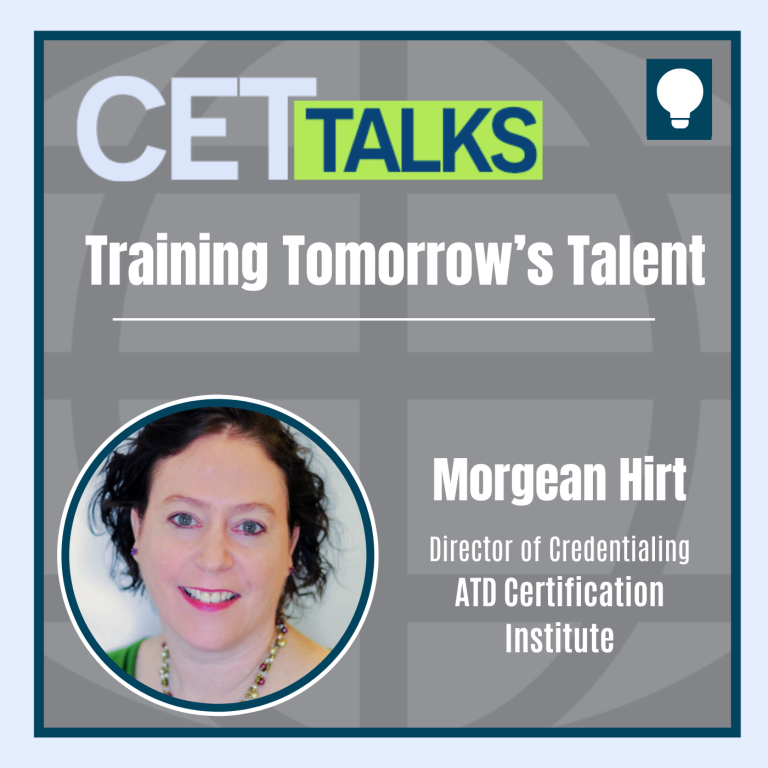
Episode 31: Training Tomorrow’s Talent: Exploring Certification, Standards, and Impact with ATD’s Certification Institute
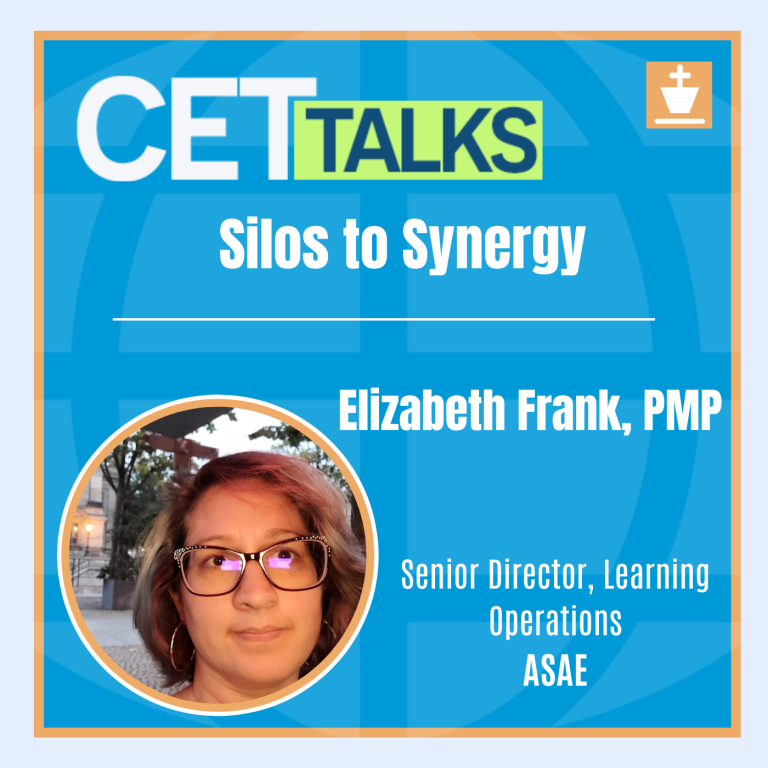
Episode 30: Silos to Synergy: Holistic Approaches to Creating Collaborative Learning

Episode 29: Credentials in Crisis: Challenges and Opportunities in Modern Education Recognition
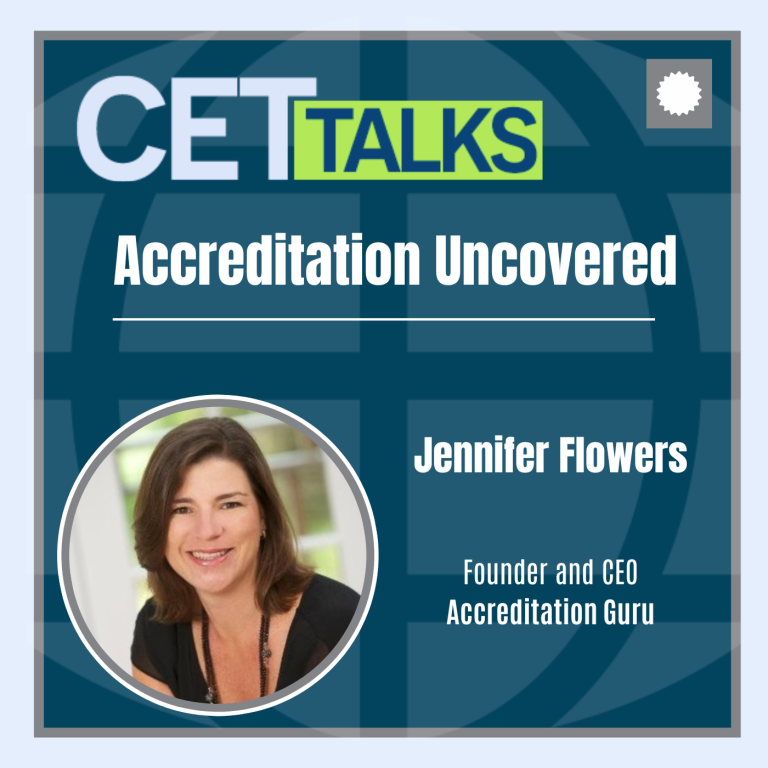
Episode 28: Accreditation Uncovered: Essential Insights from an Industry Leader

Episode 27: Two Truths with a Lie: Managing the Myths of Modern-Day Learning
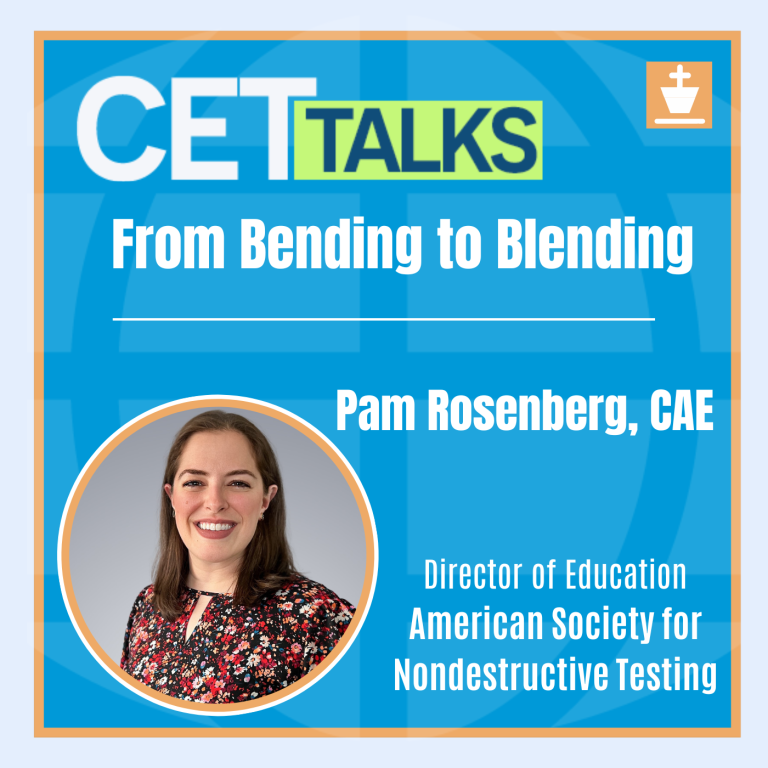
Episode 26: From Bending to Blending: Best Practices in Integrating Externally-Created Content
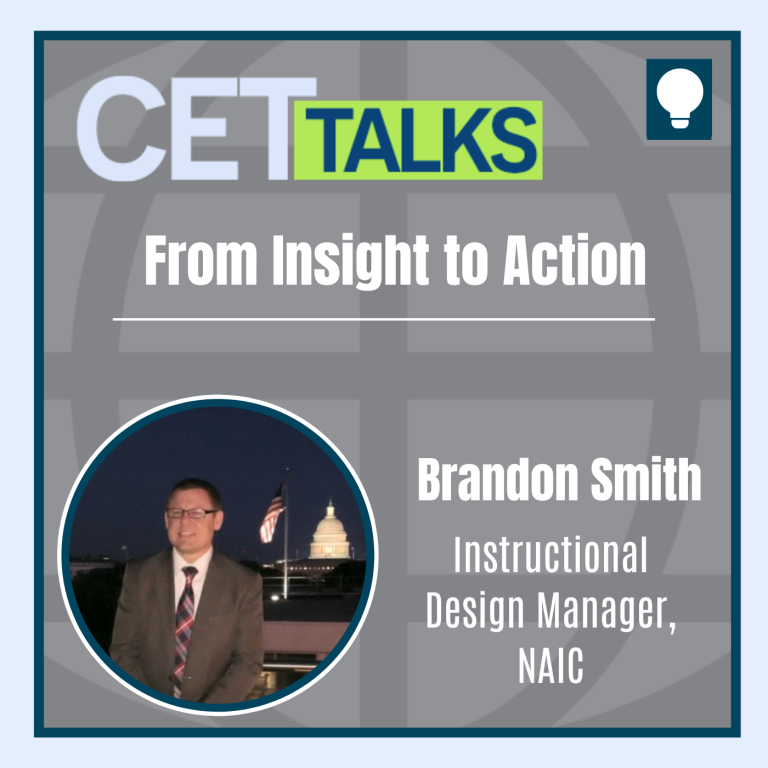
Episode 25: From Insight to Action: Charting the Career Path of a SME-turned-ISD

Episode 24: Cultivating Careers: The Power of Employee Engagement for Organizational Success
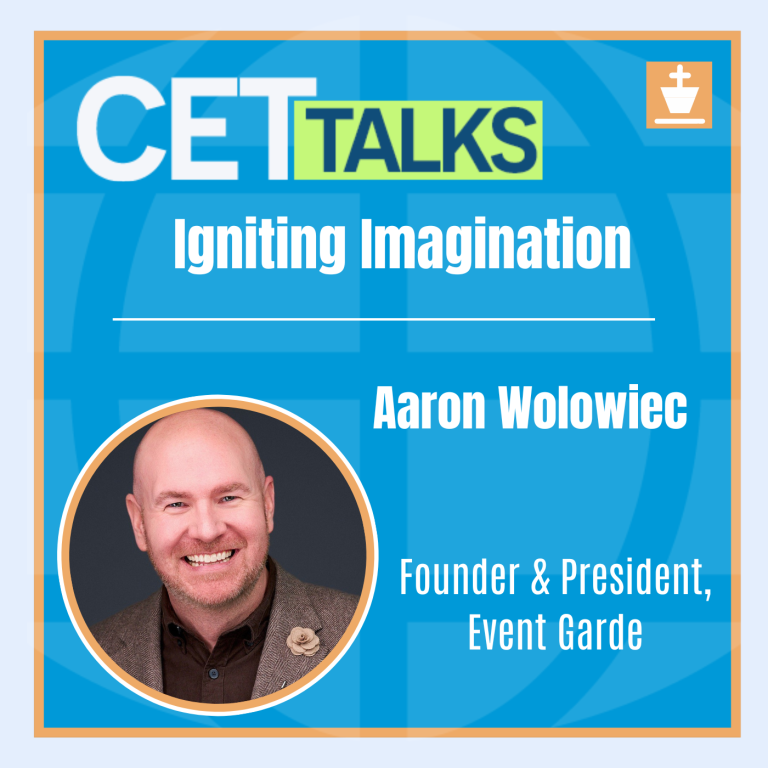
Episode 23: Igniting Imagination: Crafting Creativity in Training Environments
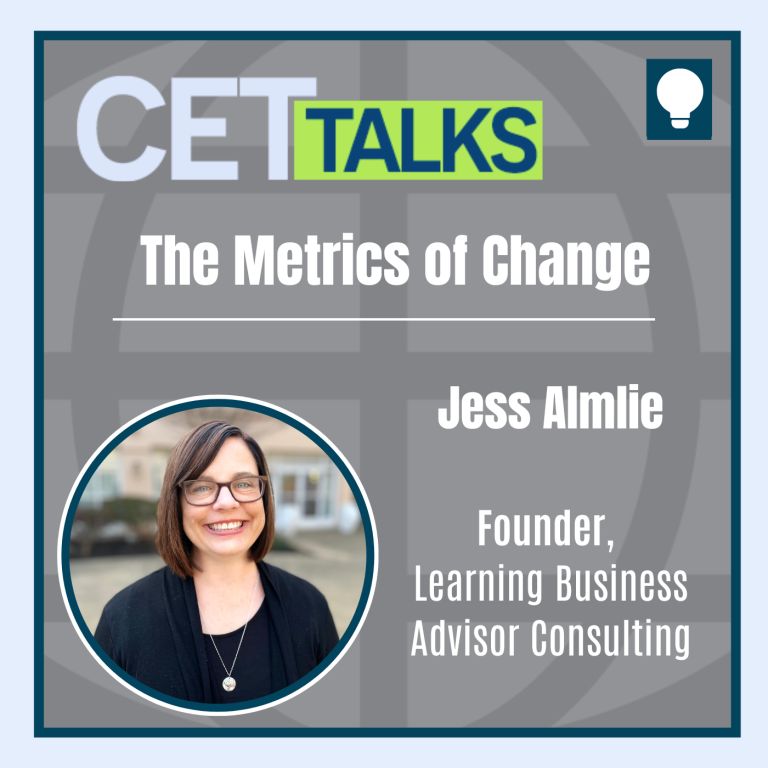
Episode 22: The Metrics of Change: Navigating Purposeful Measurement in L&D
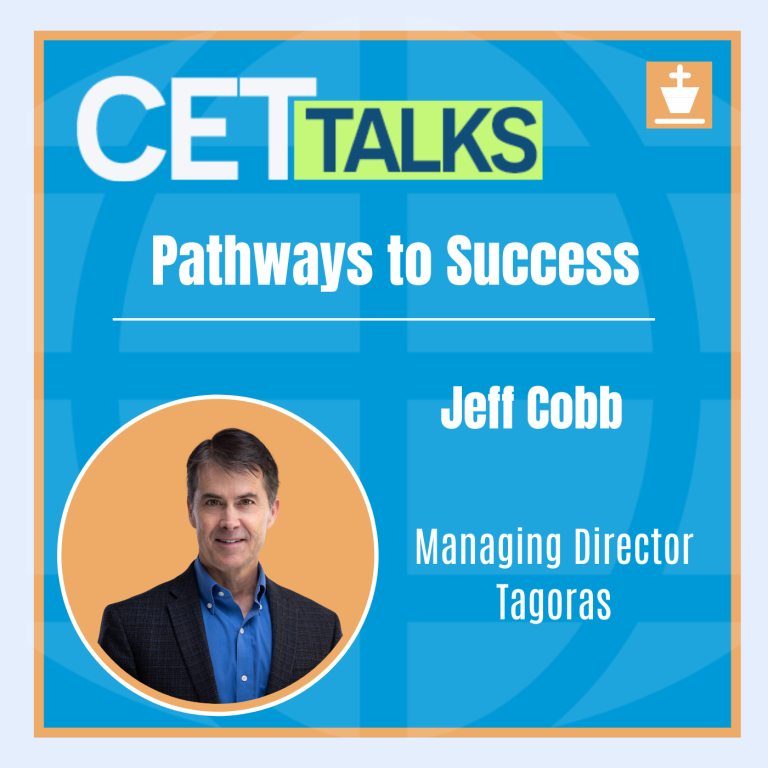
Episode 21: Pathways to Success: The Value of Lifelong Learning through Digital Credentials
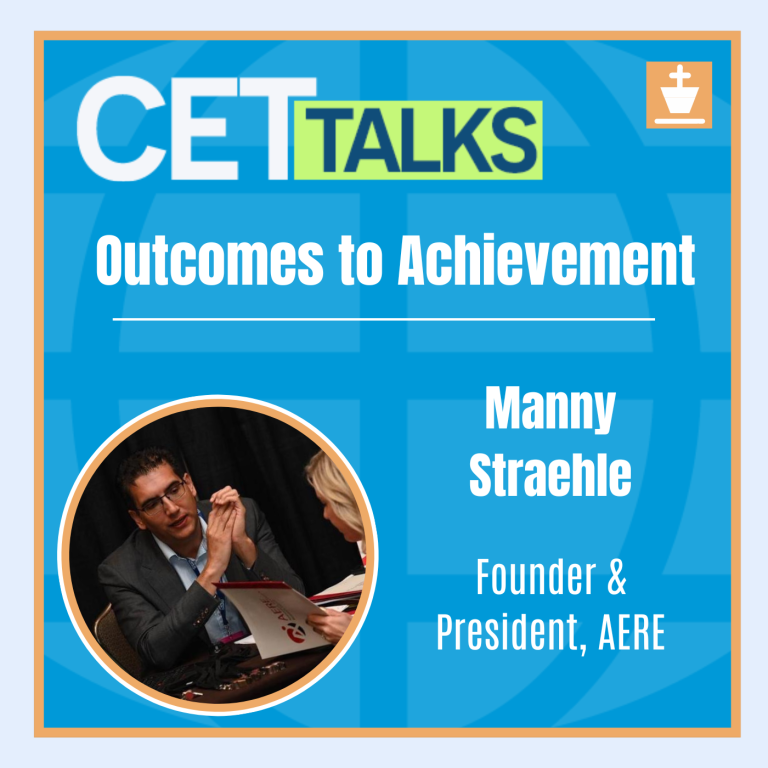
Episode 20: Outcomes to Achievement: Crafting Tomorrow’s Workforce Through Competency Models

Episode 19: Chatting with the Future: Enhancing AI Output Through Prompt Engineering

Episode 18: On the Inclusive Frontier: Harnessing Neurodivergence in Modern Training

Episode 17: Designing with Purpose: Strategies for Accessible e-Learning Development
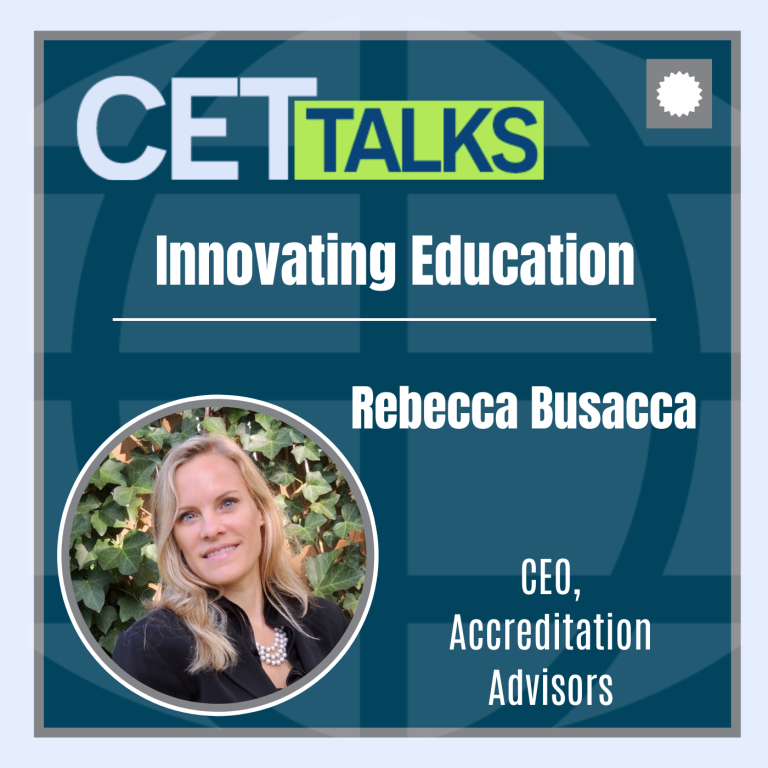
Episode 16: Innovating Education: Navigating Accreditation for Short-Term Training
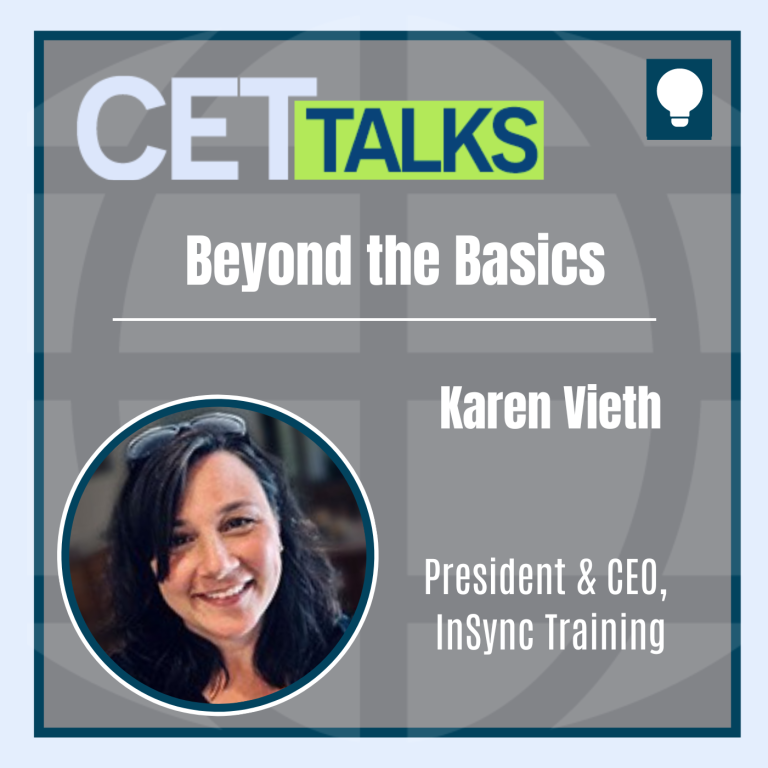
Episode 15: Beyond the Basics: Elevating Virtual Training through Expert Facilitation
